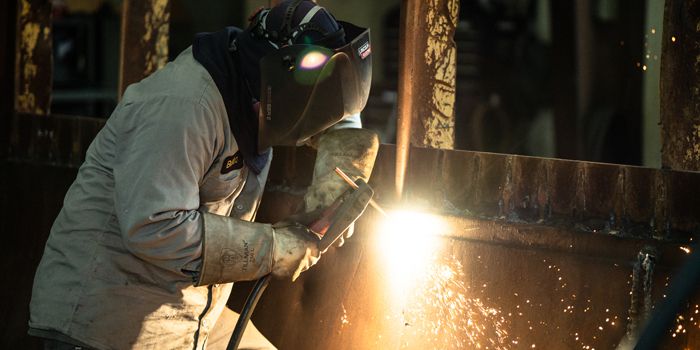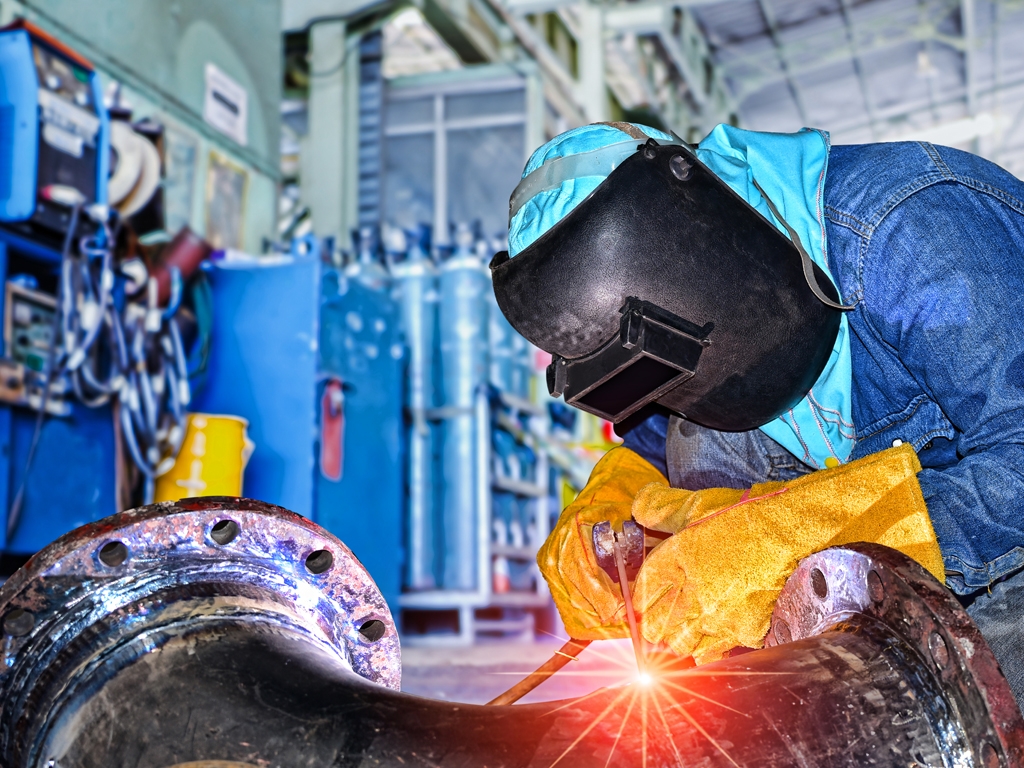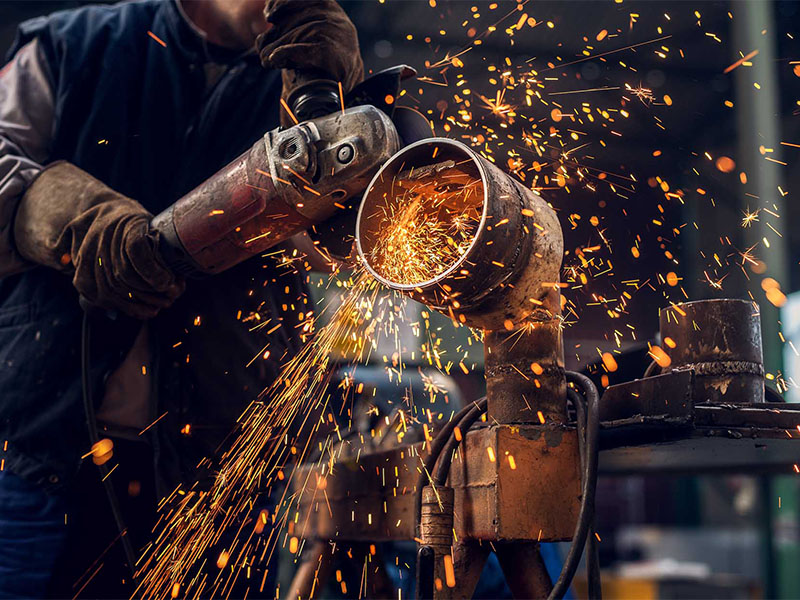Common Welding Fixing Issues and Exactly How to Address Them Properly
Welding fixings usually experience a series of concerns that can jeopardize the stability of the end product. Typical issues include poor penetration, porosity, and misalignment, among others. Each issue offers special challenges that require specific techniques for resolution. Understanding these problems is important for welders intending to enhance their end results and skills. This conversation will certainly discover these usual welding repair issues and reliable approaches to address them.
Poor Infiltration
Inadequate infiltration takes place when the weld steel fails to totally fuse with the base material, causing weak joints and possible structural failings. This issue frequently stems from insufficient warmth input, wrong electrode angle, or inappropriate welding speed. Welders might encounter inadequate infiltration due to a mistake of the essential parameters for a details product density or kind. Furthermore, contamination on the base material's surface can impede effective bonding, aggravating the problem. To deal with inadequate penetration, welders ought to assure suitable setups on their tools and preserve a tidy job surface. Normal assessment of welds is suggested to identify any kind of shortages early, enabling prompt improvements and the prevention of endangered architectural integrity in welded settings up.
Porosity
Porosity is a typical problem in welded joints that materializes as tiny gas bubbles entraped within the weld steel. This problem can endanger the stability of the weld, resulting in decreased toughness and potential failure under stress. Montana Mobile Welding and Repair Fabrication. Porosity generally occurs from contamination, dampness, or inappropriate welding methods, which enable gases to escape right into the molten weld swimming pool. To deal with porosity, welders need to assure appropriate surface area prep work, preserve a clean working setting, and use suitable welding parameters. Additionally, choosing the ideal filler product and protecting gas can reduce gas entrapment. Normal evaluation and testing of welds can assist recognize porosity early, assuring timely corrective actions are taken, thereby protecting the quality and dependability of the welded structure
Imbalance
Misalignment in welding can occur from numerous elements, including improper arrangement and thermal growth. Recognizing the origin is essential for efficient resolution. A number of adjustment strategies are available to straighten parts and ensure architectural integrity.
Sources of Imbalance
Welding misalignment usually comes from a selection of underlying problems that can jeopardize architectural honesty. One primary reason is improper fit-up of components prior to welding, which can lead to spaces and uneven surface areas. Variants in thermal expansion during the welding procedure can additionally result in distortion, especially if the materials being joined have different coefficients of growth. Additionally, insufficient fixturing and securing may fail to hold parts firmly in position, causing activity throughout welding. Poorly maintained tools, including welding machines and devices, may present incongruities in the weld bead, further adding to misalignment. Operator mistake, stemming from insufficient training or experience, can likewise play a considerable role in creating misaligned welds.

Adjustment Strategies Offered
Attending to misalignment efficiently requires a mix of rehabilitative techniques customized to the details problems at hand. One usual method is making use of fixtures or jigs to hold components in the proper placement throughout welding, ensuring consistent alignment. In addition, preheating the products can help in reducing distortion and enhance fit-up. For significant misalignment, mechanical adjustment techniques, such as making use of hydraulic jacks or clamps, can be utilized to fix the placement prior to welding. Post-weld warm treatment might also be necessary to relieve tensions triggered by misalignment. Careful examination and modification throughout the configuration stage can avoid misalignment problems from becoming considerable issues, promoting a smoother welding procedure and improving general architectural stability.
Distortion
Distortion is a common difficulty in welding that can occur from numerous aspects, consisting of unequal cooling and heating. Comprehending the root causes of distortion is necessary for applying efficient prevention methods. Resolving this concern not just improves structural honesty however also enhances the total quality of the weld.
Reasons for Distortion
When subjected to the extreme heat of welding, products typically go through adjustments that can lead to distortion. This phenomenon mainly emerges from thermal expansion and contraction throughout the welding process. As the weld area heats up, the product broadens; upon cooling, it gets, which can develop inner anxieties. In enhancement, irregular home heating across a workpiece can exacerbate these anxieties, causing warping or bending. The type of material likewise plays a considerable function; metals with varying thermal conductivity and coefficients of expansion may respond differently, bring about uncertain distortions. Furthermore, inadequate joint layout and inadequate fixturing can add to misalignment throughout welding, raising the probability of distortion. Comprehending these causes is crucial for effective welding fixing and prevention strategies.
Prevention Techniques
Efficient prevention strategies for distortion during welding emphasis on controlling heat input and making sure correct joint layout. Keeping a constant warmth input aids to decrease thermal growth and contraction, which can result in distortion. Using strategies such as pre-heating the workpiece can also reduce the temperature level gradient, advertising consistent home heating. Furthermore, selecting ideal joint layouts, such as T-joints or lap joints, can boost security and minimize tension concentrations. Carrying out proper fixturing to protect the workpieces in place further aids in preserving positioning throughout the welding process. Lastly, staggered welding sequences can distribute warmth a lot more evenly, avoiding local distortion. By applying these approaches, welders can considerably lower the chance of distortion and boost the total high quality of their welds.
Fracturing
Fracturing is a common concern encountered in welding repair work, often resulting from numerous aspects such as improper cooling rates, material selection, or poor joint prep work. The event of splits can considerably compromise the stability of the weld, bring about prospective failings throughout procedure. To resolve this issue, welders must initially analyze the origin causes, making certain that products work and properly selected for the details application. In addition, managing the air conditioning price during the welding process is crucial; quick cooling can induce tension and bring about splitting. Correct joint design article and preparation likewise add to lessening the danger. Applying these techniques can enhance weld high quality and durability, inevitably reducing the chance of fracturing in completed weldments.

Incomplete Fusion
A considerable problem in welding fixings is incomplete fusion, which happens when the weld metal does not adequately bond with the base product or previous weld passes - Montana Mobile Welding and Repair. This flaw can bring about weak points in the joint, potentially compromising the integrity of the bonded framework. Variables adding to insufficient fusion consist of insufficient heat input, inappropriate welding method, and contamination of the surfaces being joined. To address this concern efficiently, welders must guarantee correct pre-weld cleaning and surface prep work, as well as change their welding parameters to accomplish sufficient penetration and fusion. Regular examination throughout the welding procedure can also aid recognize insufficient fusion early, permitting for prompt rehabilitative actions to boost the total high quality of the weld
Overheating
While welding fixings can improve architectural stability, overheating provides a considerable challenge that can bring about product destruction. Extreme heat during welding can modify the mechanical residential properties of steels, causing lowered toughness, boosted brittleness, and bending. This sensation is especially important in high-stress applications where structural dependability is vital. Recognizing getting too hot can include visual examinations for staining or distortion, along with checking temperature level throughout the welding procedure. To reduce the risks related to overheating, welders ought to use proper strategies, such as regulating warm input, adjusting traveling speed, and making use of appropriate filler products. Furthermore, carrying out pre- and post-weld warm therapies can aid restore material homes and boost the total top quality of the fixing, guaranteeing lasting efficiency and security.
Frequently Asked Concerns
What Are the Typical Signs of a Welding Problem?

Just How Can I Test My Welds for High quality?
To check welds for high quality, one can make use of visual examinations, ultrasonic testing, and radiographic techniques. Each strategy ensures structural honesty, determines issues, and validates adherence to defined requirements, eventually boosting the integrity of the welded joints.
What Security Safety Measures Should I Take While Welding?
When welding, one ought to prioritize safety by putting on appropriate personal safety equipment, making sure proper ventilation, safeguarding flammable materials away, preserving a tidy office, and understanding environments to avoid mishaps and injuries.
Can I Repair a Weld Without Renovating the Entire Joint?
Repairing a weld without redoing the whole joint is feasible, depending upon the damages (Belgrade Fabrication). Techniques such as grinding, including filler product, or using a welding procedure can effectively resolve certain defects while maintaining the surrounding structure
What Tools Are Essential for Efficient Welding Fixes?
Crucial tools for effective welding repairs include a welding device, wire brush, mill, safety equipment, clamps, and filler materials. Each tool er309l plays a vital role in guaranteeing high quality and safety during the fixing procedure. Porosity generally arises from hot air welder contamination, dampness, or improper welding strategies, which allow gases to get away right into the molten weld pool. Inadequately kept tools, consisting of welding machines and devices, might introduce disparities in the weld bead, more adding to misalignment. When subjected to the intense warm of welding, products typically undergo changes that can lead to distortion. Cracking is a typical problem experienced in welding repair services, typically resulting from different elements such as improper air conditioning rates, material choice, or inadequate joint preparation. A considerable issue in welding repair services is insufficient blend, which takes place when the weld metal does not appropriately bond with the base material or previous weld passes.